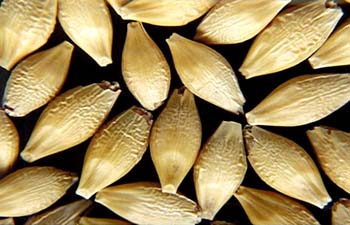Malting Barley growers are getting better and better at producing big yields of good quality malting barley, and generally well within the specification set by maltsters. But, according to Dr Julian South, Executive Director of the Maltsters Association of Great Britain (MAGB), despite all this, some are still failing to comply with contractual limits of grain moisture content, and there appears to be a very good reason for it.
According to some of the leading supply merchants contracted to MAGB’s members, the barley moisture problem can be mostly laid at the door of the ‘on farm’ moisture meters which are either incorrectly calibrated, or have not been freshly calibrated against new crop barley samples. Every year there are far too many samples/deliveries which when tested on the NIR Infratec, the standard instrument used across the malting barley industry for measuring grain moisture content, that are found to contain up to 1% more moisture than the ‘on farm’ instrument suggests. This all too often interferes in the smooth passage of a delivery to a maltings, and incurs penalties against the contract price to the grower. “It is a totally unnecessary cost to the whole supply chain”, says Dr. South, “and one the industry could, with a little extra effort, easily overcome.”
To remedy this, Dr South recommends all malting barley growers take steps at the onset of harvest, to have their ‘on farm’ equipment calibrated to the NIR Infratec. Measurements using Infratec NIR can be relied upon since they are from a homogeneous bulk sample calibrated against a reference method for testing moisture. Calibration of the on farm meter will involve either taking sealed ‘new crop’ samples to an NIR Infratec, and then testing the same samples on the ‘on farm’ instrument, and, if necessary, re-calibrating the ‘on farm’ instrument as per manufacturers instructions. Or alternatively, taking the ‘on farm’ instrument to a NIR Infratec!
Dr. South suggests “most malting barley growers will have a merchant or commercial grain store which they can turn to for help with this, and particularly where the latter are part of the grower’s supply chain, growers can expect that help to be very forthcoming. But,” Dr. South added “ this procedure should not just be at harvest, all the time growers have malting barley in store, which they have to monitor on a regular basis, it would be sensible to re-check the calibration of the ‘on farm’ instrument, perhaps every three months.”
Dr South goes on to offer further advice to ensure optimal performance of portable moisture meters:
- Monitor the performance of your meter against a ‘reference sample’ with known moisture content if one is available.
- Ensure the instrument is clean of any contaminating residue before measurement, and be sure the sample is representative of the crop being measured.
- Take more than one reading (preferably more than one sample) and calculate an average result.
- Handle your meter carefully – store in an air conditioned combine cab, if available. The sample and meter should be near to 20 degrees C for most accurate measurement.
“Excess moisture content is not, of course, simply an issue of price penalties on delivery, it is also all about the potential deterioration of the quality of the barley in long term storage, including the development of mycotoxins. The safe (dry) storage of malting barley has been fundamental to the industry forever, and with all the technology we now have, it is surprising that this issue still presents a challenge!” said Dr. South.




